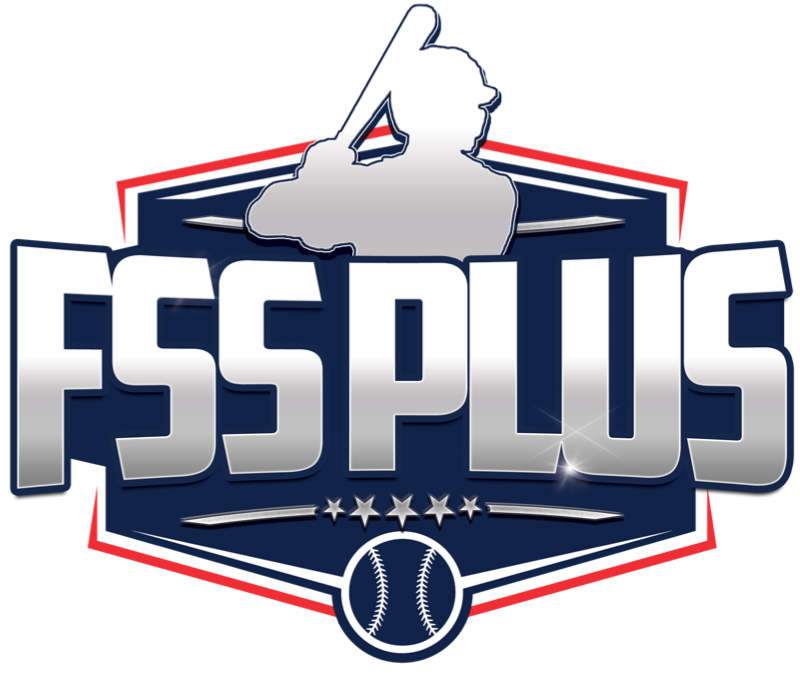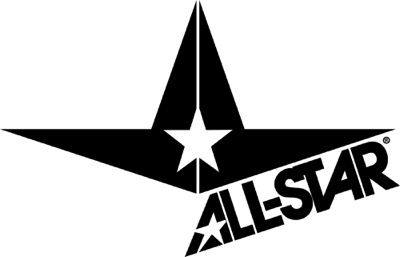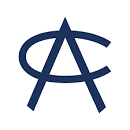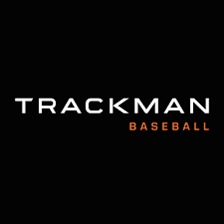The 2024 Preseason Top 30 lists are built around the idea of certainty and future Role. Similar to industry projection systems such as Future Value (FV), Overall Future Potential (OFP), and Grade, Role is a way to describe to what degree a player will add value to his organization at peak.
Our scale is a bit more conservative than other grading systems. We take into account recent seasonal performance, proximity to impact, metric/data analysis, and industry conversations to build a case for the most likely outcome for any given player.
It is important to note these Role labels are fluid and can change as a player moves up the developmental ladder. It is not uncommon for a player to change his role projection over the span of even one month. Players jump from a Role 35 to a Role 40 quite quickly.
Things like mechanical adjustments and physical maturation can alter a player’s projection seemingly overnight. Players change. Keep that in mind.
Below is our Role chart used to place future projection on players.
| ROLE | DESCRIPTION |
|---|---|
| 20 | No organizational value. Non-prospect. |
| 30 | Organizational value, filler. Likely peaks at Triple-A or below. |
| 35 | Potential up-and-down, Quad-A prospect. Has some tools. Development necessary to secure prolonged MLB role. |
| 40 | Back-up at MLB level. No. 5 starter on non-competitive team. Depth. |
| 45 | Potential starter on contender. Bench player for championship-level team. |
| 50 | Starter on a championship-level team. Lacks star ceiling. Steady. Potential No. 4 starting pitcher. |
| 55 | Potential all-star. Some impact. Above average big-league regular. Mid-rotation starter on a contender. |
| 60 | All-star level player. Impact. Middle-of-the-order bat. No. 2 starter on good team. |
| 70 | Perennial all-star. Will contend for seasonal awards. Potential MVP/Cy Young upside. No. 1 starting pitcher. Ace. |
| 80 | Hall of Fame upside. Generational. MVP/Cy Young Favorite some years. Organizational pillar who can carry an entire franchise at times. |
You will not find players with a sub-50 Role on our Top 100 Prospect List. You are also unlikely to find any sub-35 Role players on a Top 30 board. Generally, organizations will have at least 30 players with big-league projection.
All rankings and roles by Joe Doyle
Player notes by Jason A. Churchill
The once-strong Marlins system has faded into oblivion, depleted by injuries, trades, and lackluster draft and international classes. They did get back to their old ways, taking upside prep arms last July.
It would go a long way if Max Meyer, their 2020 first-round pick, has a healthy 2024 because after that there’s not much impact anywhere near the majors.
| RANK | PLAYER | POS | ROLE |
|---|---|---|---|
| 1 | Noble Meyer | RHP | 60 |
| 2 | Max Meyer | RHP | 55 |
| 3 | Thomas White | LHP | 50 |
| 4 | Xavier Edwards | 2B | 50 |
| 5 | Dax Fulton | LHP | 50 |
| 6 | Karson Milbrandt | RHP | 45 |
| 7 | Yiddi Cappe | SS/3B | 45 |
| 8 | Victor Mesa Jr. | OF | 45 |
| 9 | Jacob Amaya | SS | 40 |
| 10 | Luis Cova | OF | 40 |
Noble Meyer is the prototypical prep arm at 6-foot-5, 190 pounds, with high-end arm speed and athleticism. He added velocity consistently throughout high school, generally pitching at 93-97 mph with fringe-average command and average control.
Scouts saw him touch 100 mph his senior year, but the pitch is relatively ordinary from a movement and shape standpoint, suggesting the club may tinker with his grips and finish.
Meyer’s slider is already above average and projects to at least plus. He’ll get a lot of outs in the lower minor with velocity and the breaking ball, but the expectation is time will hand him an average or better changeup, as well as a chance at better data on the heater.
White doesn’t carry the physical projection of Meyer, but he’s already 6-foot-5 and 215 pounds touching 97 mph with a four-seamer.
White may have a more complete arsenal than Meyer entering 2024, considering better shape on his fastball and a more refined third pitch. While his ceiling may not quite reach that of his teammate, the Marlins have a pair of potential future fronline arms likely to reach the majors within a year of one another.
Fulton fills up a scouting report with quality raw stuff and at 6-foot-7 and 230-plus pounds will have physical forecasting into his mid-20s.
He’s already sitting 92-97 mph and also offers a more projection in a low-90s sinker that may work better with his slider. He may end up with two above-average to plus breaking ball, led by a vertical curveball the club would like to firm up a bit.
Amaya reached the majors last season after a solid showing in Triple-A including some pop (15 HR) to go with his ability to draw walks.
Scouts generally see Amaya’s ceiling as an average regular, thanks to his prowess with the glove. He’s 25 now and should start 2024 as the Marlins’ starting shortstop.
| RANK | PLAYER | POS | ROLE |
|---|---|---|---|
| 11 | Jacob Miller | RHP | 40 |
| 12 | Jacob Berry | 3B | 40 |
| 13 | Kemp Alderman | OF | 40 |
| 14 | Dane Myers | OF | 40 |
| 15 | Brock Vradenburg | 1B | 40 |
| 16 | Joe Mack | C | 40 |
| 17 | Andres Valor | OF | 35 |
| 18 | Will Banfield | C | 35 |
| 19 | Jose Gerardo | OF | 35 |
| 20 | Emmett Olson | LHP | 35 |
| 21 | Fabian Lopez | SS | 35 |
| 22 | Jhon Cabral | RHP | 35 |
| 23 | Patrick Monteverde | LHP | 35 |
| 24 | Troy Johnston | 1B | 35 |
| 25 | Juan De La Cruz | RHP | 35 |
| 26 | George Soriano | RHP | 35 |
| 27 | Jordan McCants | SS | 35 |
| 28 | Ian Lewis | 2B | 35 |
| 29 | Antony Peguero | OF | 35 |
| 30 | Sandro Bargallo | LHP | 35 |
Berry raked at LSU, getting him picked at No. 6 overall despite signs he may have to slide over to first base.
But the switch hitter hasn’t produced in 144 pro games, posting a .236/.300/.382 line, with some lopsided K/BB ratios and just 12 long balls. He’s also made 24 errors in 99 games (96 starts) at the hot corner.
Needless to say, 2024 is a big year for Berry, who will be 23 in May, but the bat speed and bat-to-ball remains so it’s too soon to even consider writing him off just yet.
Mack is a left-handed hitting catcher who went No. 31 overall in 2021, but has struggled at the plate for two-plus seasons in pro ball (.217/.324/.303). He’s been aggressive without results and his swing leaves little margin for error.
He projects as average defensively and has well above-average arm strength.
Lopez, signed in January of 2023, flashed all five tools in the DSL, including some pop and switch-hitting ability.
His footwork and arm strength garner atttention on first look, and he can run, too.
Montverde, 26, reached Triple-A last season after a solid, 21-start showing in Double-A. He doesn’t throw hard, but his cutter, curveball, and changeup all have a chance to be average or better. The changeup flashes plus now.
He throws from a high-3/4 slot, but creates some plane and run on his fastball, and he gets solid-average ride on the pitch up in the zone, allowing it to play up despite a lack of optimal velocity.
Lewis, 21, signed as a speedy defender with a chance to switch hit and play multiple positions. It’s at least 60-grade speed and his arm is good enough to allow him to play some all over the field.
He’ll need to make more contact than he did a year ago, but Lewis is growing into his twitch at the plate and showed extended stretches of above-average zone judgment.
Peguero projects well in center from an instincts and technique standpoint — routes and jumps grade out well — but his raw speed and quickness is rather ordinary, potentially pushing him to a corner where his power projection doesn’t play.
His swing is short with good bat speed, engineered for line drives rather than loft, but he may have 15-homer power if he makes an adjustment. His arm fits in left or right.
- MLB Draft: Mock Draft 3.0 - June 27, 2025
- 2025 MLB Draft: Top 600 Prospects - June 25, 2025
- MLB Draft: Mock Draft 2.0 - June 10, 2025















